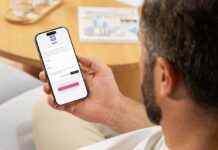Emojis have evolved to become an integral part of modern-day digital communication across platforms. Virtually everyone now adds emojis to the personal/private messages they send in chats and public posts. Undoubtedly, emojis help to convey messages even clearer, by hinting at the author’s (sender’s) emotions or feelings as at when the message was sent.
But what exactly are emojis, and how do they mix up with tech and science? Emojis have been around for decades; the first set of emojis were created in 1999 by Shigetaka Kurita as part of NTT DoCoMo’s i-mode for its mobile platform; the set contained about created emojis. According to ExpressVPN, emojis have been heavily revolutionized over the years to look better and remain compatible across devices and platforms.
Evolution of Emojis: From Emoticons ( :-) ) to Emojis (😄)
It is alleged that over 10 billion emojis are sent daily across various platforms; these emojis are used by over 95% of internet users to communicate their emotions, feelings, and moods. Also, more new emojis are released regularly, which keeps the emoji lexicon growing consistently.
The-now “emojis” were called emoticons, which literally means “emotion icons,” and they are barely dashes and symbols, for example: “:—(“, “;“, and “:—)“. These were mostly used at the end of sentences only; they automatically transformed into a smiling face, wink, or angry face, depending on the symbol combinations you used.
Today, emoticons have transformed into emojis and become more vast; country flags, cultural items, foods, snacks, facial expressions, hand gestures, and even state of health (including disabilities) now have emoji art that represents each – perfectly. For many, these have made communications easier, as they can clearly illustrate how they feel or what they’re trying to pass across to the message receiver using emojis.
Emojis evolved from being mere textual “smileys” in the 90s to becoming vibrant, tiny images that captured a wide range of human emotions and objects. The introduction of a standardized emoji keyboard in 2011 paved the way for the global popularity of emojis.

More so, in 2019, emojis representing physical disabilities were introduced, and later in 2020 gender-neutral and people emojis (showing different human actions and gestures) with various skin tones were launched too, improving the lexicon.
From heartfelt laughter to subtle sarcasm; emojis, today, have enriched our text-based conversations, adding emotions and nuances that might otherwise be lost in translation if words were used.
The Science Behind Emojis

Apparently, emojis are more than just playful icons; they have a profound psychological impact on digital communication. Research indicates that the human brain processes emojis in a manner similar to how it processes real human faces, triggering emotional responses. The effective use of emojis in messages helps convey tone and intention, which could turn cold texts into warm, relatable conversations.
Just as humans can communicate physically without vocals – by using facial expressions and hand gestures – emojis act as the digital counterparts of such one-on-one non-verbal communication, filling the gap left by the absence of body language and gestures. For example, a message that reads “I’m excited to see you” and “I’m excited to see you😃” would be interpreted differently by the receiver.
Emojis have the power to amplify the emotional content of messages, making them more engaging and authentic. They bridge the language barriers between effective communication across cultures, so people, irrespective of cultural diversities can perfectly understand the sentiment behind words sent through digital platforms.
Similarly, emojis can lead to cross-cultural misunderstandings; the interpretation of certain emojis varies across cultures, leading to unintended meanings. Hence, as the emoji lexicon keeps getting updates, skin-tone-based have been introduced for more clarity between inter-racial communicators. Understanding these nuances is crucial to effective cross-cultural communication.
Blending Emojis and Technology: How Tech Helped Emoji Evolution

While emojis may look simple and “easy,” creating them and making them look as they appear across devices requires a lot of technical consideration.
To ensure the universal compatibility of emojis, The Unicode Consortium, a nonprofit organization headquartered in California, took the responsibility to maintain and publish the Unicode Standard, which acts as the basis for universal emojis compatibility.
The Unicode Consortium works to meticulously encode each emoji, allowing different devices to display them accurately. Technological advancements and the Unicode intervention have made today’s emojis much better and paved a new mode of linguistic evolution.
The Future of Emojis
Just as with every technological trend, emojis will keep evolving as technology advances. Apparently, the complexity and clarity portrayed by modern emojis differ from what they used to be in the 90s. Already, some tech companies have launched apps that allow users to create personalized emojis they can use in chats and public posts.
The future of emojis is speculative and we can only hope to see a lot of improvement to what’s existing already. More so, the addition of emojis into virtual and augmented reality is an exciting advancement, which opens up new ways of communicating emotions and experiences.
What More?
Emojis have significantly improved digital communications. Anyone can submit a new emoji prototype to Unicode, so we will be seeing more emojis going forward. However, Unicode scrutinizes each submission before adding a new emoji to the existing lexicon. Over to you, how do you feel about how much emojis have evolved?

















Most companies use emojis to greet users when they log in, or to provide status updates on their service. Emojis could also be used to create personalized avatars for users, or to allow users to react to messages with emojis.